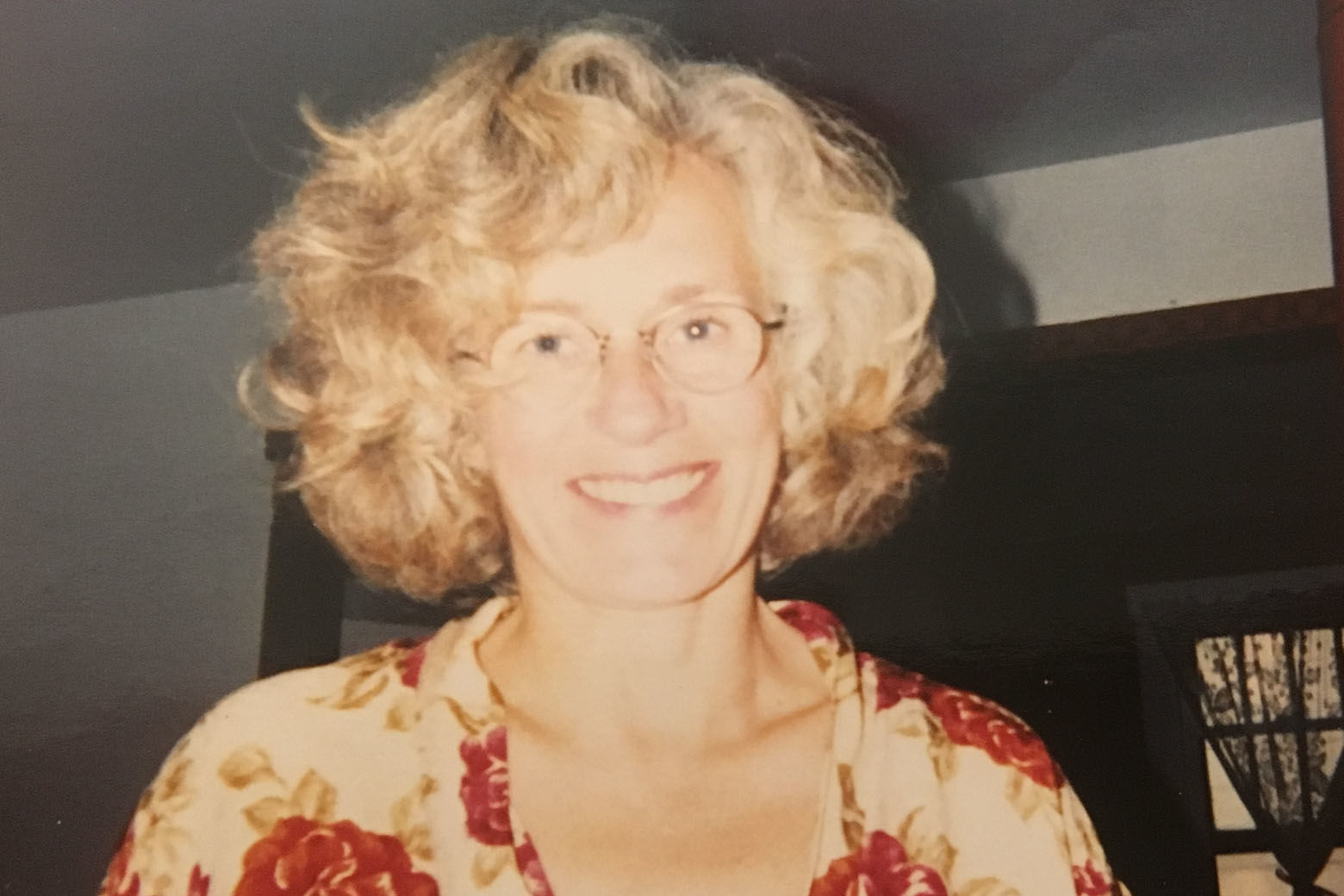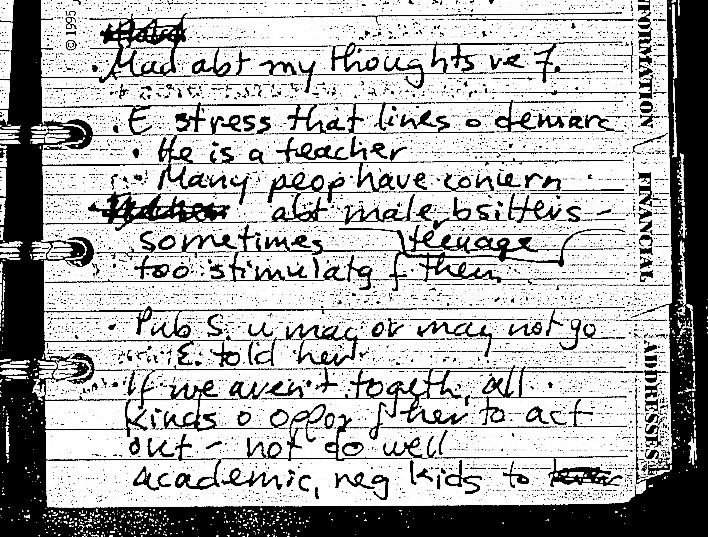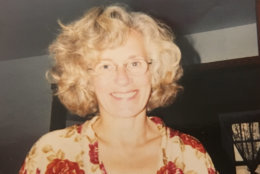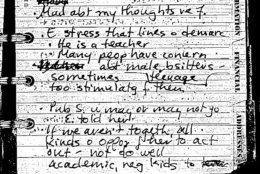







WASHINGTON — Montgomery County police announced Thursday the person of interest in the disappearance of a Washington Post copy editor who vanished 18 years ago is a former teacher who’s now serving a nearly 170-year prison sentence for sexually abusing the woman’s daughter.
Alison Thresher, 45, disappeared in May 2000 as she prepared to start a new job at the newspaper.
Montgomery County Police Chief Tom Manger said Fernando Asturizaga, who taught Thresher’s daughter at the Friendship Community School and sometimes worked as a baby sitter, is the person of interest in Thresher’s disappearance. Thresher’s body has never been recovered, but police believe she was killed.
Asturizaga, who was convicted in 2012 of sexually abusing Thresher’s daughter, Hannah Thresher, is currently serving a 168-year sentence. Hannah Thresher went to police in 2010 and said Asturizaga, who by that time was living in Vermont, had raped and sexually abused her for three years, starting in 1999 when she was 10 years old.
Asturizaga, 51, has refused to speak with investigators about Alison Thresher’s disappearance, Manger said.
The police chief said investigators reopened the case in 2016. Thanks in part to newly analyzed forensic evidence using techniques that didn’t exist 18 years ago, they believe Alison Thresher was killed inside her Bethesda apartment, that her body was transported to an unknown location after she was killed and that Asturizaga may have attempted to destroy evidence inside the apartment.
However, Manger said the new analysis is not enough evidence to charge Asturizaga in her death, in part because her body has never been recovered.
“We’re hoping through this announcement that anyone with information about the case will come forward,” he said. “We’re seeking information about Asturizaga’s activities at the time of Alison’s murder, any additional instances of inappropriate behavior by Asturizaga, anyone who knew Asturizaga when he taught at the Friends School and any information about places that Asturizaga may have frequented and any information about the case in general.”
The police chief was joined at Thursday’s news conference by Hannah Thresher and her brother, Sam Thresher.
Police said before she went missing, Hannah’s mother grew concerned about an inappropriate relationship between her and Asturizaga. Alison Thresher confronted Asturizaga and also wrote to school officials at the Friends Community School in College Park, Maryland, where he taught Spanish and worked in the after-school program and summer camp.
Alison Thresher, who was going through a “contentious” divorce with her husband at the time, was also distressed that her husband, James Thresher, had employed Asturizaga as a baby sitter for the children. In her journals, Alison Thresher also documented her concerns about Asturizaga’s “grooming” of her daughter, police said.
“Soon after she made her suspicions known, my mother disappeared,” Hannah Thresher said Thursday at the news conference. “A few months later, when I expressed frustration at his lack of empathy towards my grief over the loss of my mother, Mr. Asturizaga said to me: ‘I thought things would be easier for us now that she’s gone.’ At the time I didn’t think anything of it. But after nine or 10 years of reflection I started to question if his words meant something more.”
Hannah Thresher added: “For my mother, I need the whole truth to come out. Despite the trial that ensued when I came forward about his abuse, and the resulting 100-some years that he was sentenced to spend in prison, there are still questions to be answered.”
Police on Thursday publicly provided a timeline of the months and days leading up to Alison Thresher’s disappearance.
Thresher had begun working as a news producer for The Washington Post website in 1999 and was about to start as a part-time copy editor on the National Desk when she disappeared, according to newspaper accounts of her disappearance at the time.
She had dined with her family in Georgetown on May 23, 2000, to celebrate, returned a work email shortly after midnight about her new schedule, then was never heard from or seen again.
When she didn’t show up for work after two days, her family filed a missing person’s report and police began investigating. Shortly after her disappearance, her 1997 Volvo station wagon was found in the Brookmont area, about a mile from her Sangamore Road apartment.
A neighbor later reported hearing cries coming from Alison’s apartment at about 4 or 5 a.m. on the night she went missing, police said. A resident of the Brookmont neighborhood also later reported to police seeing a “suspicious male” running through the area about 6 a.m. that morning, near where her abandoned car would be found. Police said the physical description of that man matched Asturizaga.
At the time she went missing, police said her disappearance was suspicious but said there was no evidence of foul play. In February 2001, police announced they were investigating the case as a homicide but there had been few public updates on the case over the years.
“This has been 20 years, almost, of a question mark,” said Alison Thresher’s son, Sam, who was 10 when his mother went missing and is now in his late 20s. “And there’s been no funeral. There’s been no real closure for Hannah and I.”
Authorities pleaded for help from anyone who knew Alison Thresher or Austurizaga.
“The reason that we’re coming forward today is because we need the public’s help in this case,” Manger said. “There are people that knew this man; there are people that knew the victim; people that knew the situation with the family; and we’re hoping that someone may have some bit of information that will help us with this homicide investigation. And it’s tremendously important that we get the word out and let the public know about this.”
WTOP’s Megan Cloherty contributed to this report.








